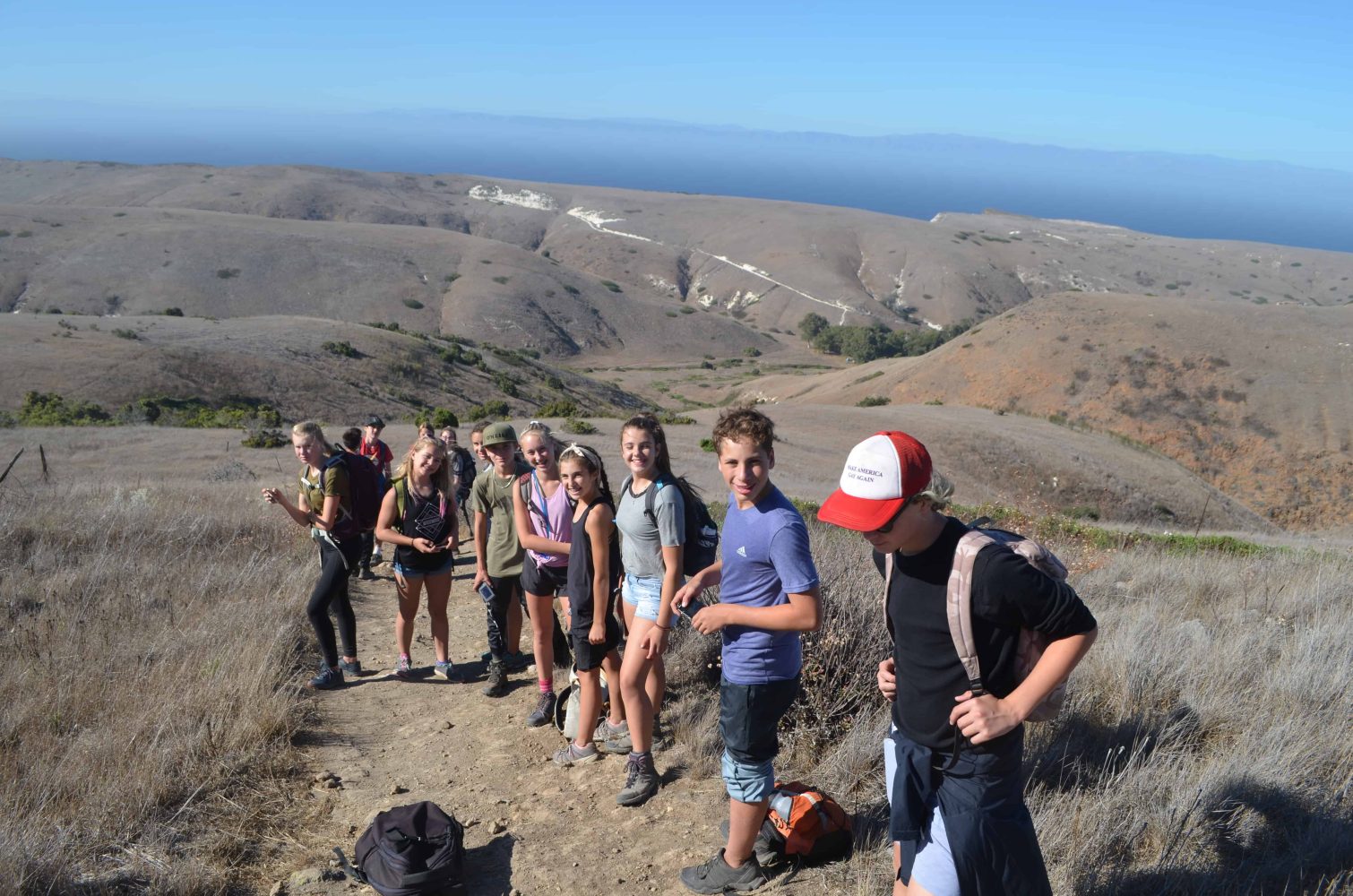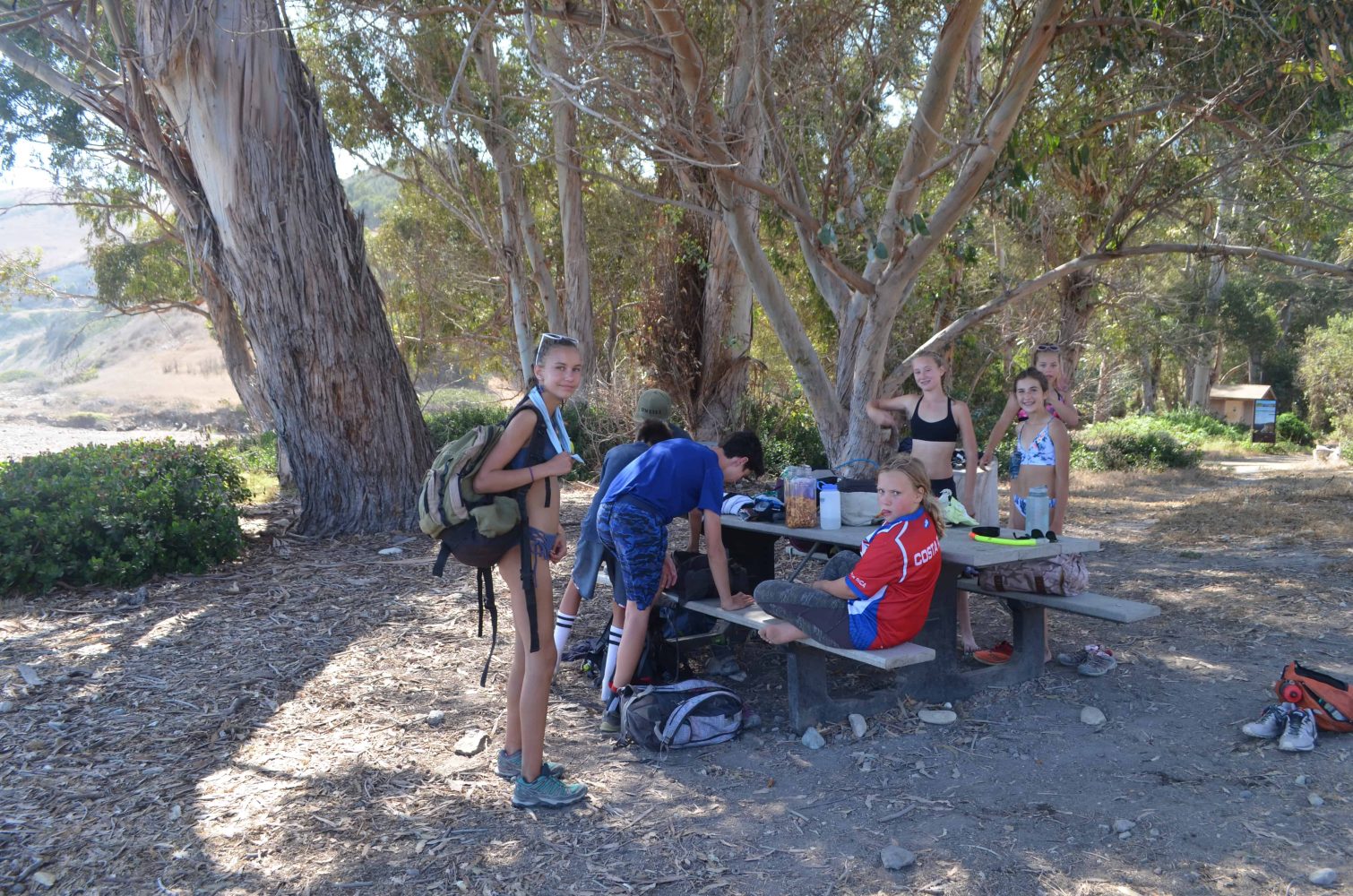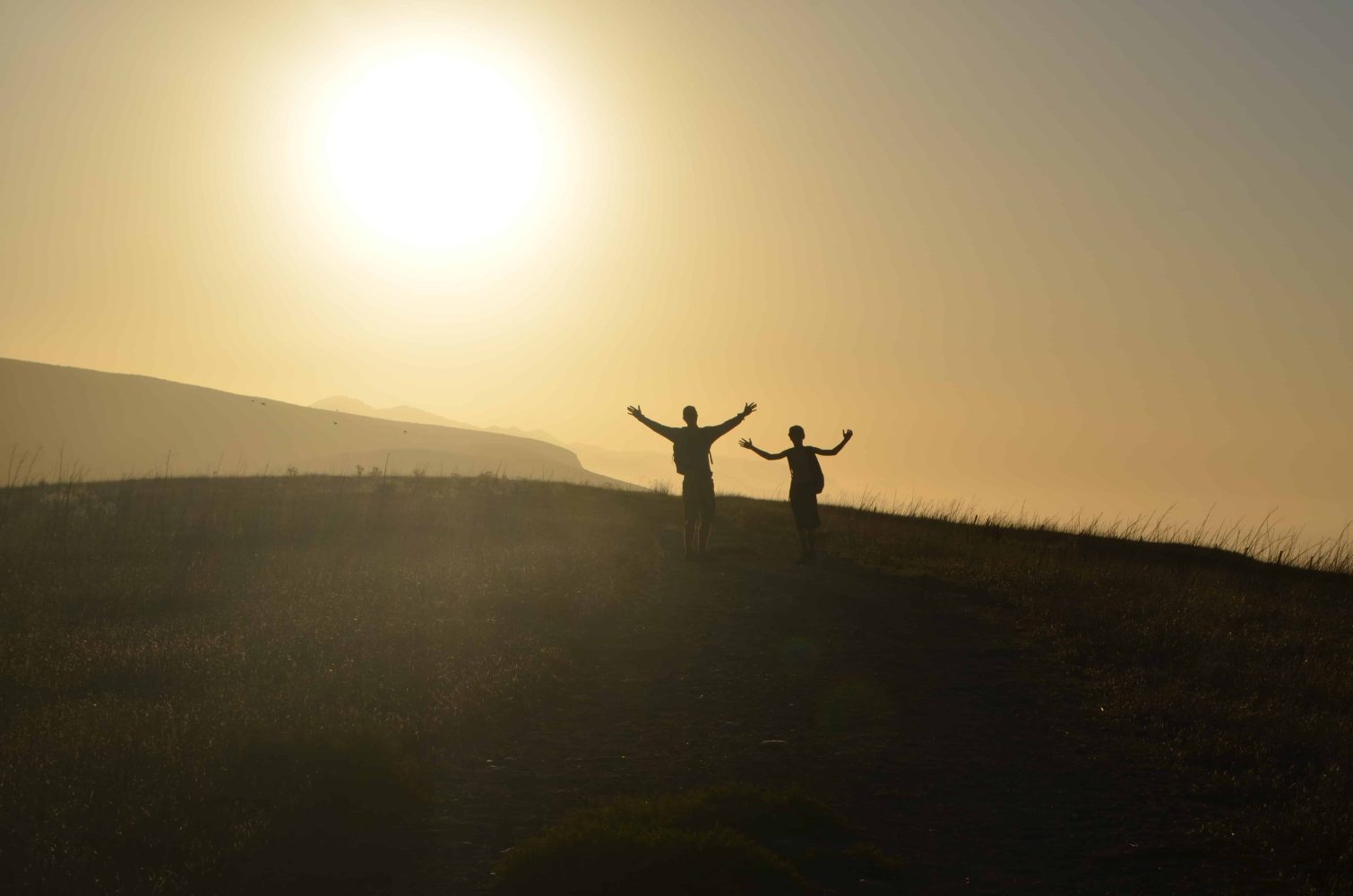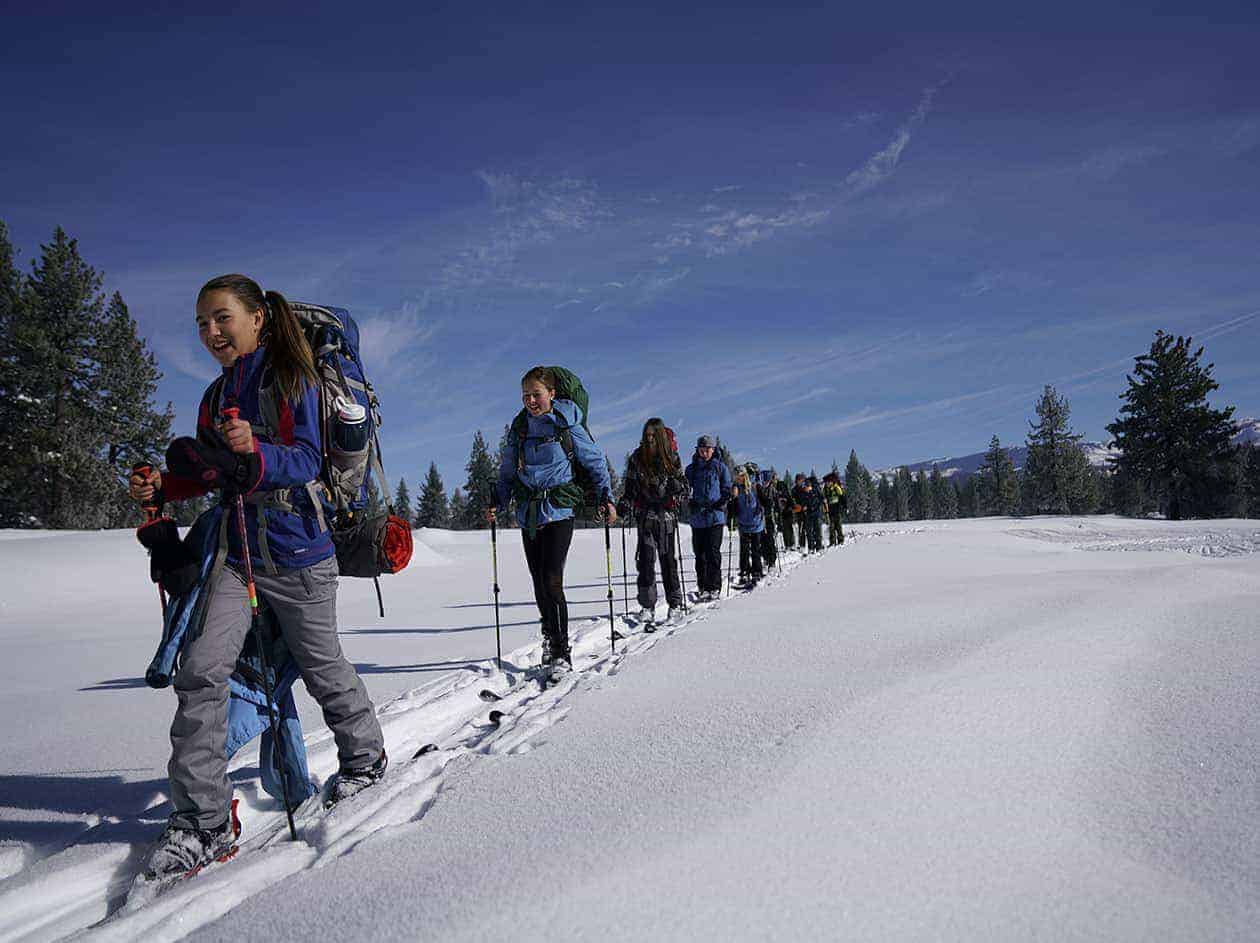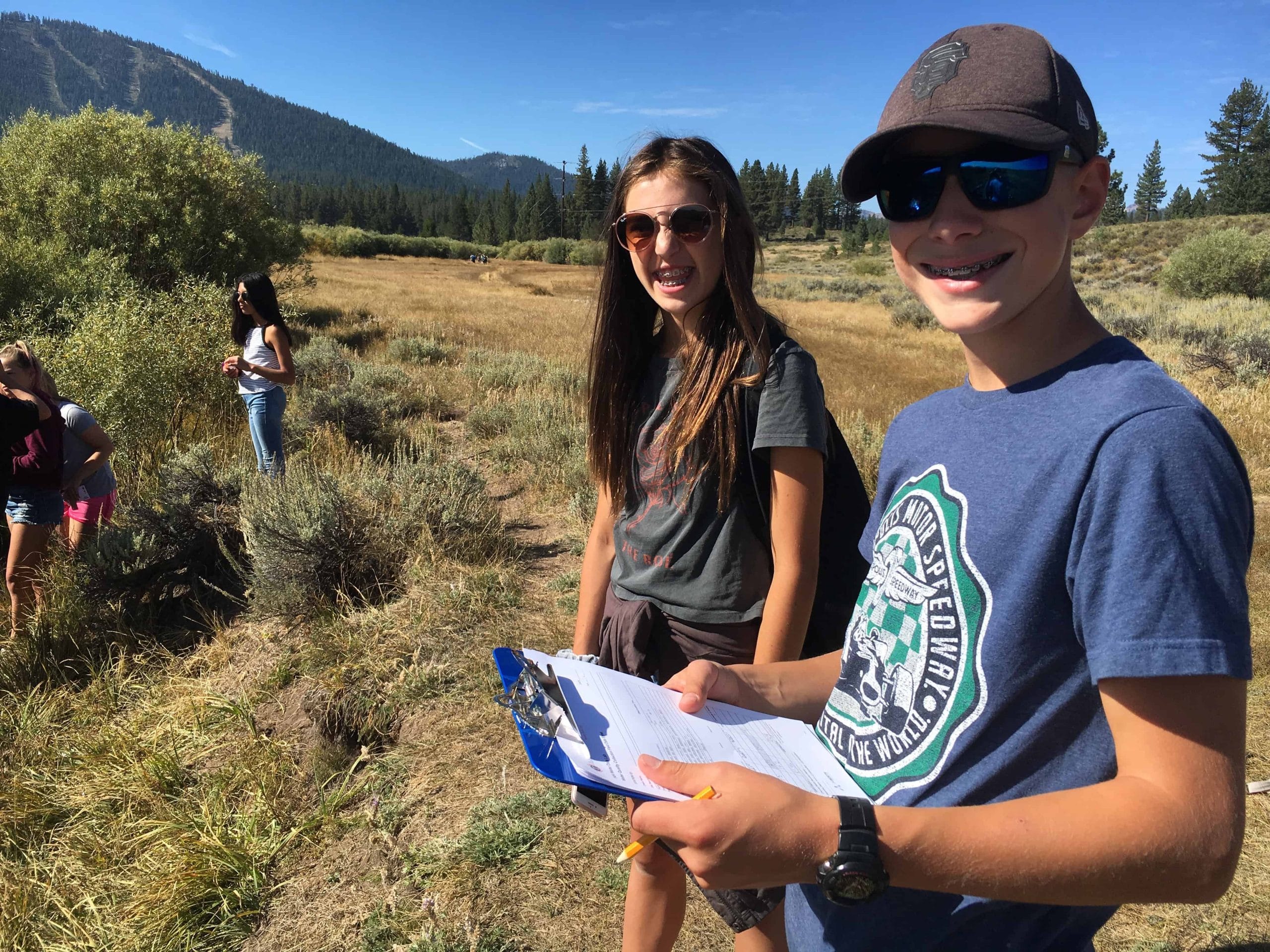Island Vibes: An Exploration of Environmental Ecosystem Impacts
How do populations and invasive/native species impact an environment or ecosystem? How do organizations impact an environment or ecosystem?
These were the questions a group of TEA Middle School Students were challenged to answer as they set off for a 5-day learning intensive to Santa Cruz Island in California’s Channel Island National Park. Led by Middle School Crew Leader Beth Vallarino and TEA Adventure Director Jack Benter the students traveled several hundred miles to experience California as it was thousands of years ago. Along the way, they met Chumash Elder Julie Lynn Tumamait-Stenslie, Director of Technology and Sustainability at the Ojai Valley School John Wickenhaeuser, and Keri Dearborn, Program Director at the Friends of Island Fox.
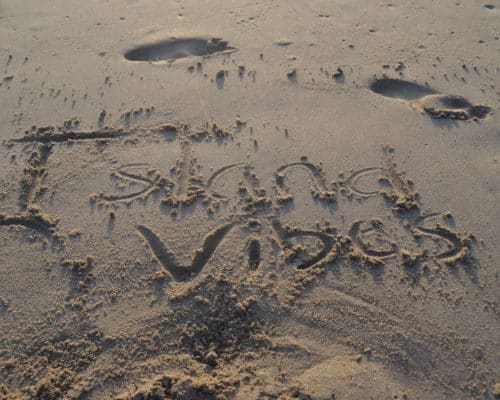
How They Prepared
Before the trip, the students researched aspects of Santa Cruz Island. Topics included looking at the Chumash people, the European settlers, native vegetation, and native animals. Students watched a documentary called “Restoring Balance” to understand the impacts of varied populations on the island. Students also skyped with Keri Dearborn, Program Director at Friends of the Island Fox in order to gain background knowledge on the near extinction, and subsequent rehabilitation of the Island’s native Santa Cruz Island fox population.
What They Experienced
The trip to Santa Cruz island from Truckee, California was a journey in itself. The crew drove about 9 hours to Ventura, California and set up at a campground. While at their campsite, the students spoke with Chumash Elder Julie Lynn Tumamait-Stenslie. In speaking with the tribal elder, students learned about the culture of the island and the native animals and animals they’d find.
The next morning they took a 1.5-hour ferry ride from Ventura to Scorpion Anchorage on Santa Cruz Island in the Channel Islands National Park. The water was rough, to say the least, but they persevered the crashing waves and the occasional splashes of water. Granted they could have sat inside too. But you know, some TEA kids enjoy being slammed down on the surface of the ocean and being sprayed by white water.
Once on the island, the students made their way to a campground. The smell of Eucalyptus trees permeated throughout the area and because they were so far away from everything, they couldn’t hear any cars or human activity. While they were setting up camp they had their first siting of the bushy-tailed Santa Cruz Island Fox!
While on the island, the crew hiked over 20 miles in total. They did a night hike to Montanon Ridge, about 1800 feet above sea level. Next, they hiked to another side of the island called Smuggler’s Cove, where the students swam and played in the rolling shore break. And finally, they hiked to Cavern Point, a ridgeline lookout above the sea. Throughout all of these physical adventures, the students experienced the flowing kelp forests under the sea juxtaposed with the dry, rocking hiking trails on the island. They saw the sun setting on the west side of Santa Cruz Island and the impossibly starry night sky with no light pollution.
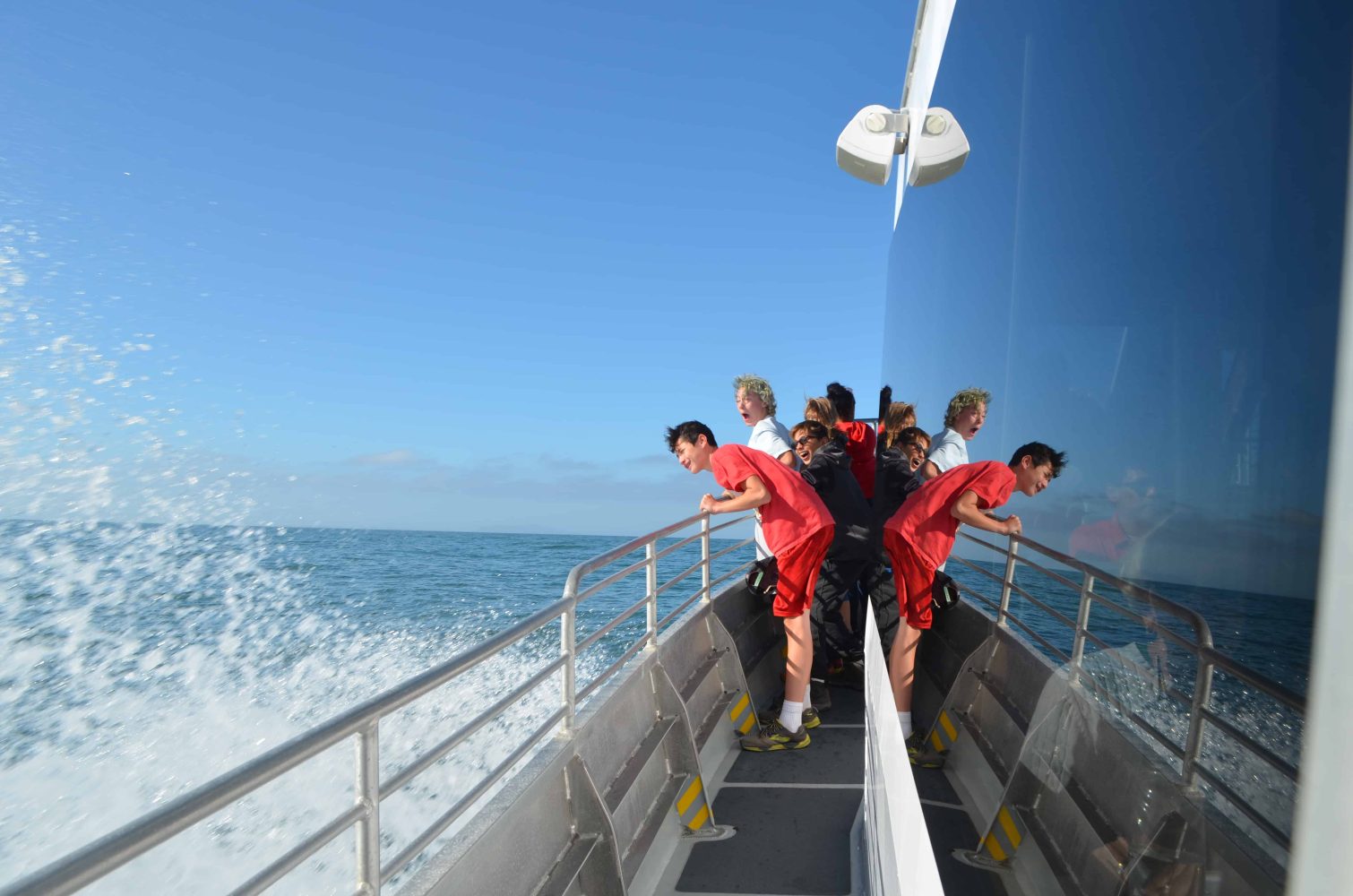
"But you know, some TEA kids enjoy being slammed down on the surface of the ocean and being sprayed by white water."
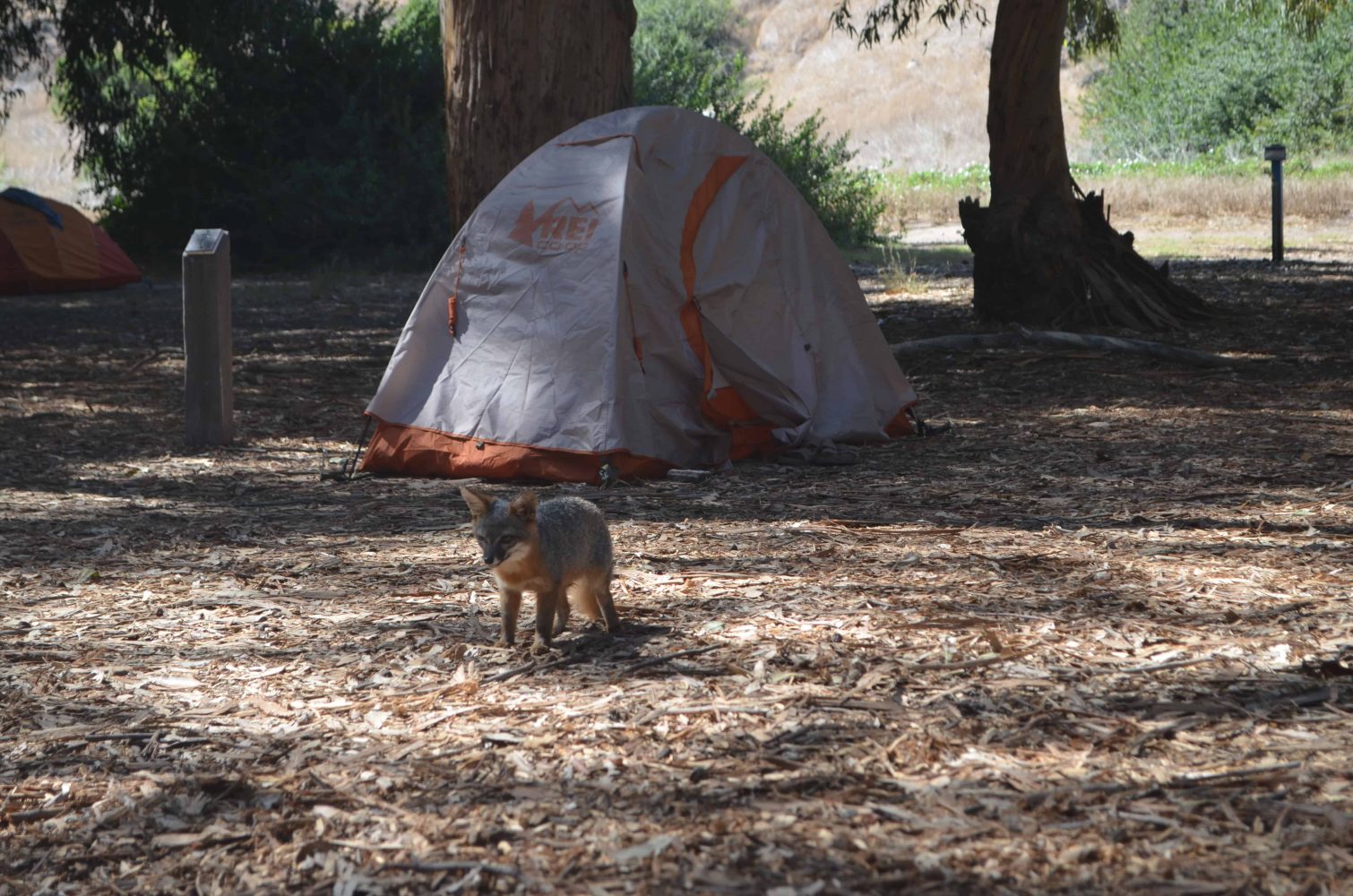
"While they were setting up camp they had their first siting of the bushy-tailed Santa Cruz Island Fox!"
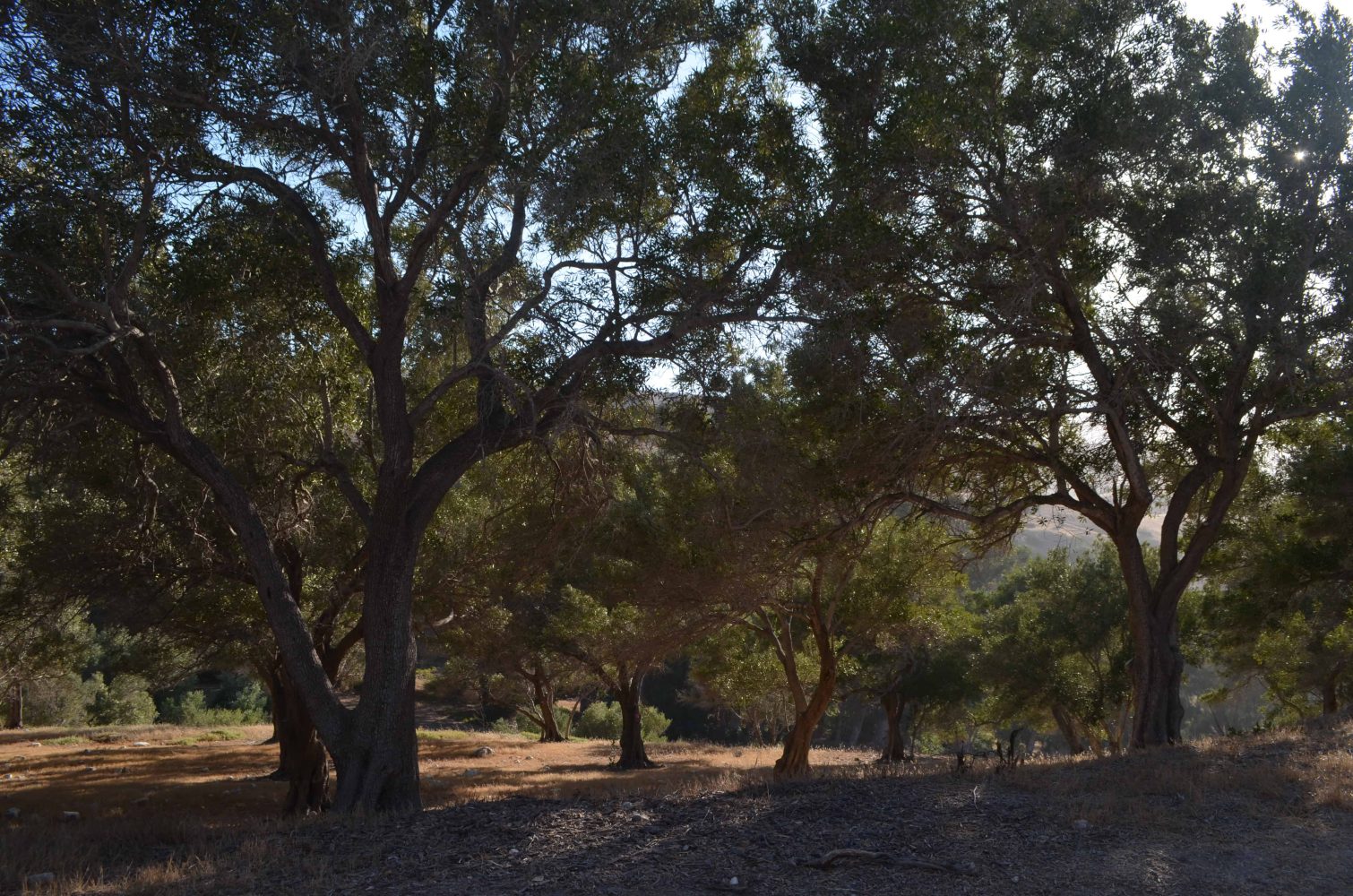
"The smell of Eucalyptus trees permeated throughout the area..."
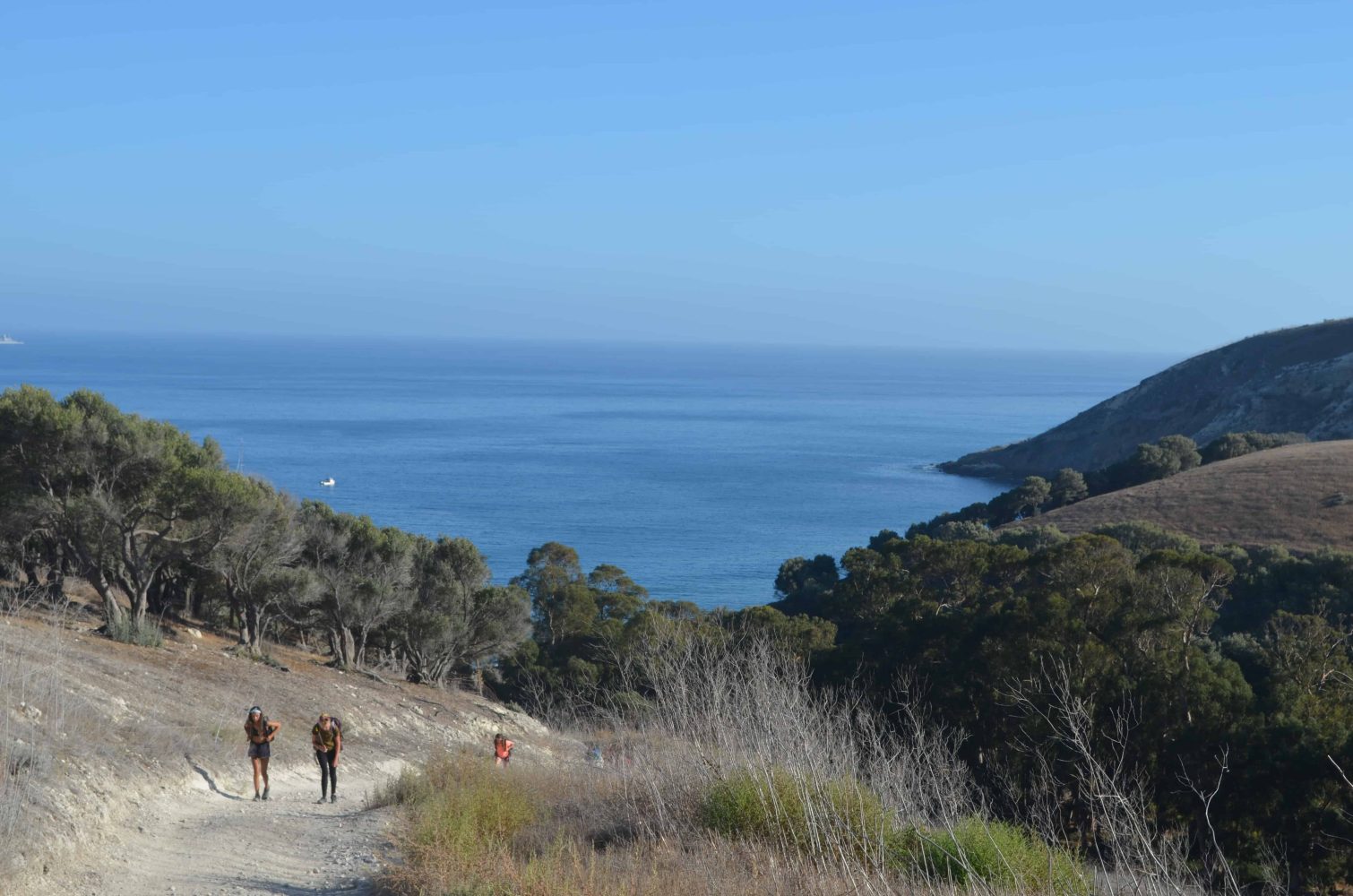
"While on the island, the crew hiked over 20 miles in total..."
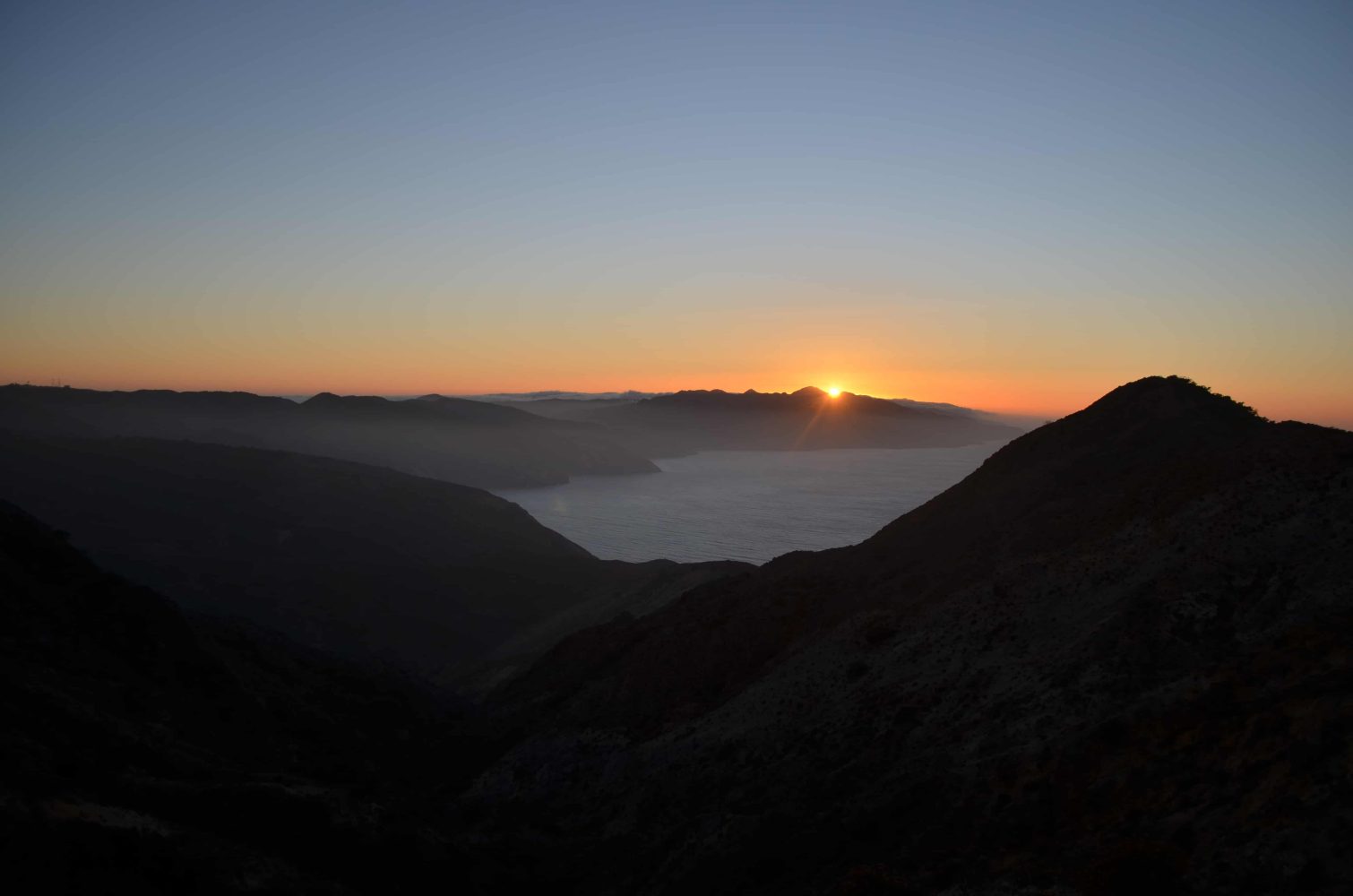
"They saw the sun setting on the west side of Santa Cruz Island and the impossibly starry night sky with no light pollution."
Special Moment on the Journey Home
On the journey home, their ferry boat was surrounded by a huge pod of dolphins, accompanying them for most of the way back to Ventura. An experience none of the students (or crew leaders) will ever forget.
After one more night of camping in Ventura, the crew drove back to Truckee the following day.
What They Learned
Students were able to experience California like it was thousands of years ago. On the trip, they were able to compare Santa Cruz Island to the greater Los Angeles area and noted how different the island life is compared to city life just 19 miles away. They became aware of the balance of ecosystems we live in and how very complex that balance is.
The students appreciated snorkeling in the protected Marine Reserves off of Santa Cruz Island and were able to experience flourishing sea life in ways they would not have been able to without protected areas. As a result, they were forced to grapple with the ongoing argument between development vs. conservation while they took into consideration the rehabilitation of the Island Fox population and the careful work that went into that.
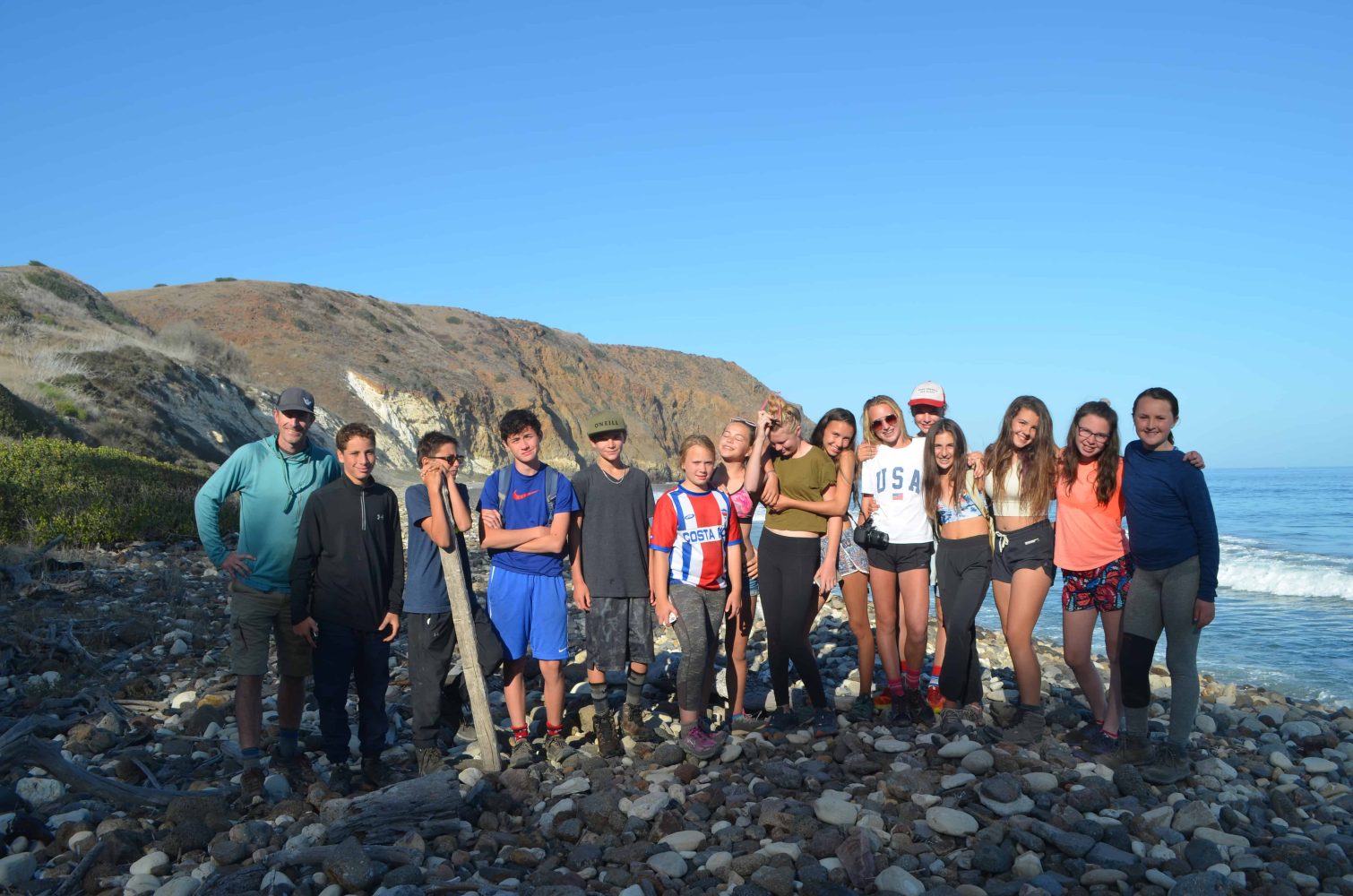
"Students were able to experience California like it was thousands of years ago."
The Student Perspective
On the ride home, the students put this message together for their parents. Look and see how they recount the experiences that were so carefully crafted by Beth and Jack.
Hey parents! We had so much fun on our island vibes trip, and want to tell you everything about it. But for now, here are some of our highlights. The first day, we drove down to Ventura, got to our campsite, and met with a Native American expert, and talked about the native animals and culture on the island.
The next day we got up early and drove to the ferry, but got there a little early, so we hung out at the beach for a bit. Out on the ferry, we had a very bumpy ride, some of us even getting soaked head to toe. We got to the island, set up camp, and had our first island fox sighting in the first 20 minutes! After setting up camp, we did a little bit of snorkeling and then set off on an eight-mile sunset hike. We had some complaints about the hike up, but the sunset made it worthwhile. The hike down was a little dangerous, but I think we all had fun and laughs.
The third day we slept in, (because of the early wake up the day before) we had a leisurely breakfast and set off on our 7-mile hike. The hike was excruciatingly hot, steep, and rocky. But the pay off for the hike was so worth it. We had arrived at smugglers cove, and it was beautiful. We spent two hours playing in the waves and body surfing.
The start of the water was super rocky, but once you got in a couple of feet, it was nice and sandy. We started to get a little hungry, so we decided to hike back. We ate a good dinner of pasta and went to bed warm and fuzzy. We had seen so many foxes some of us had dreams about them!
Day four, we slept in again, trying to get as much sleep as we could before the next day. We met up with Ojai Valley School and gathered seeds from native plants to be scattered across the island. After that, we spent two hours at the beach and snorkeled throughout the kelp forests. We got on the ferry and about halfway through our trip, we spotted an enormous pod of dolphins. There were over a hundred of them on all sides of the boat, swimming and jumping next to us. Meanwhile, Kieran was not watching the dolphins, but enjoying, cheeseburger. While the dolphins were jumping he was biting. We got back, played with some sand at the beach across the street from the harbor. We drove to our campsite and ate a quick dinner before falling asleep.
And now we are here, at the end of the trip. Day five. We got up at five in the morning, packed up quickly. And now we are on our way back to Truckee.
